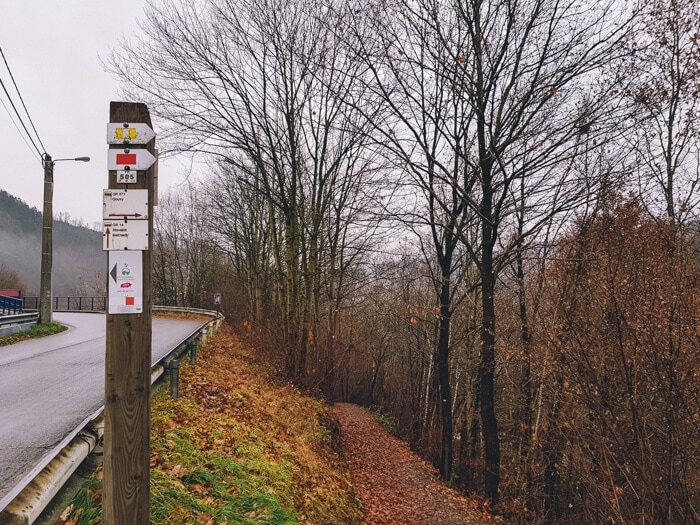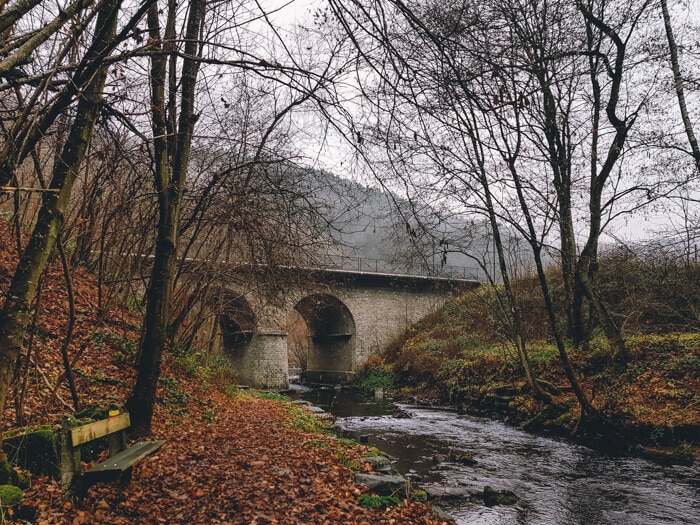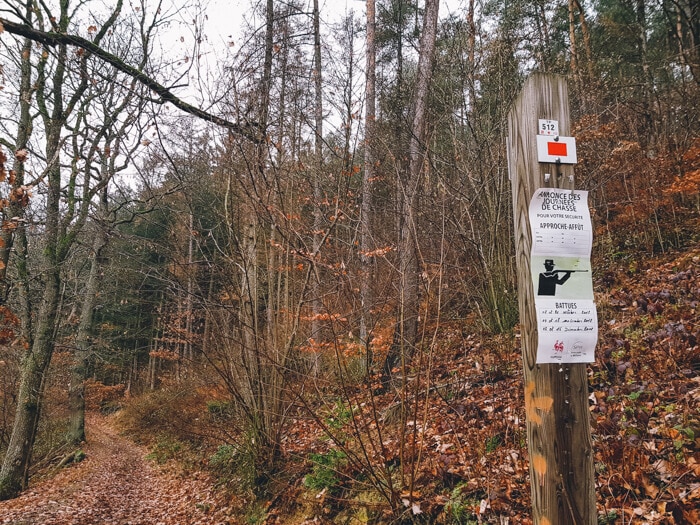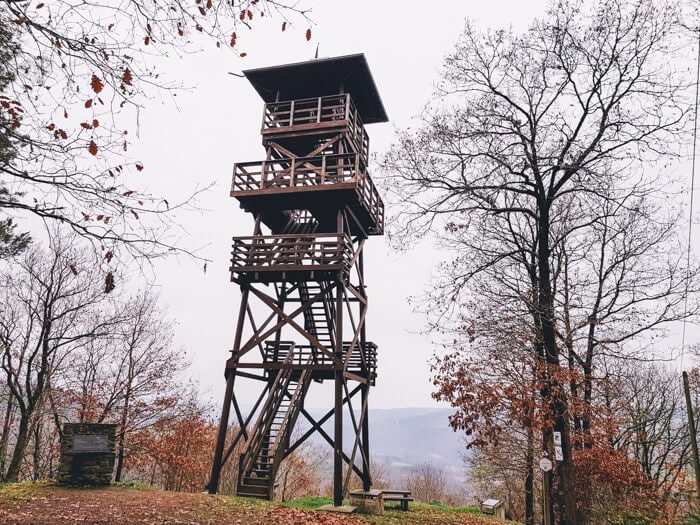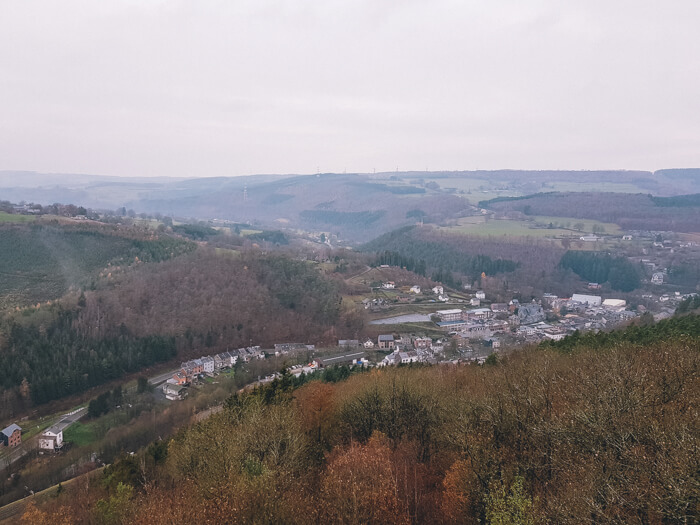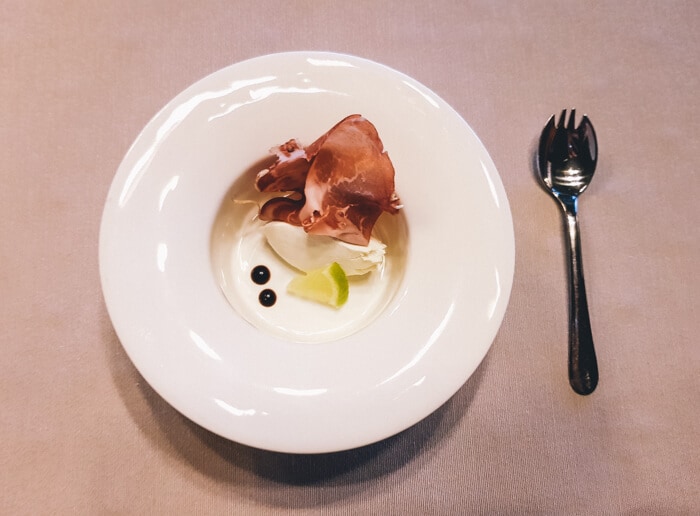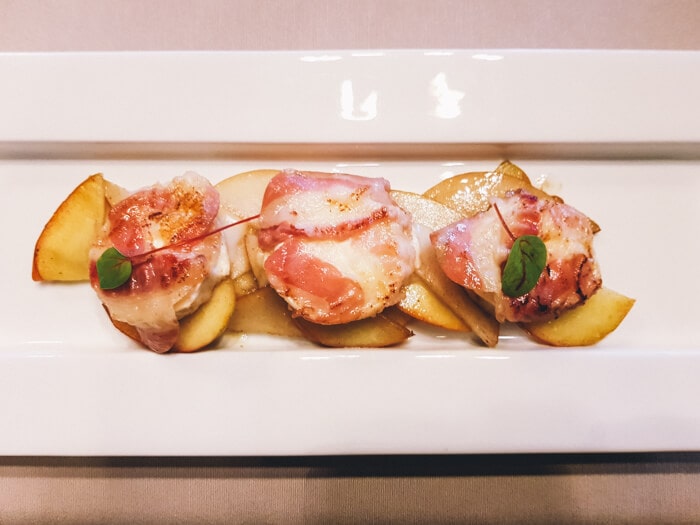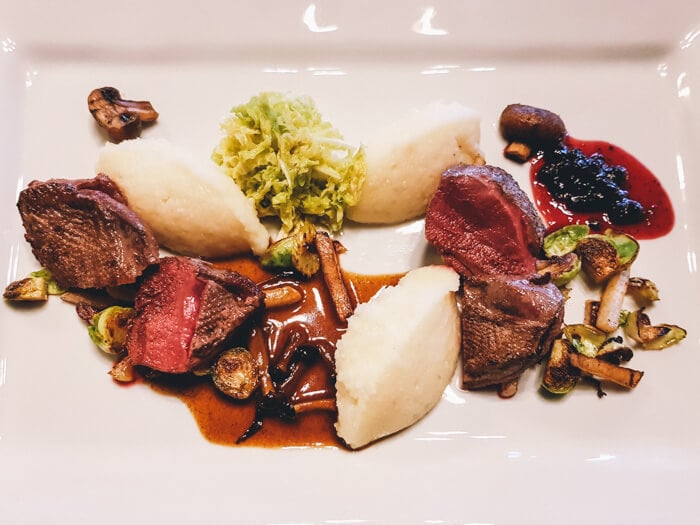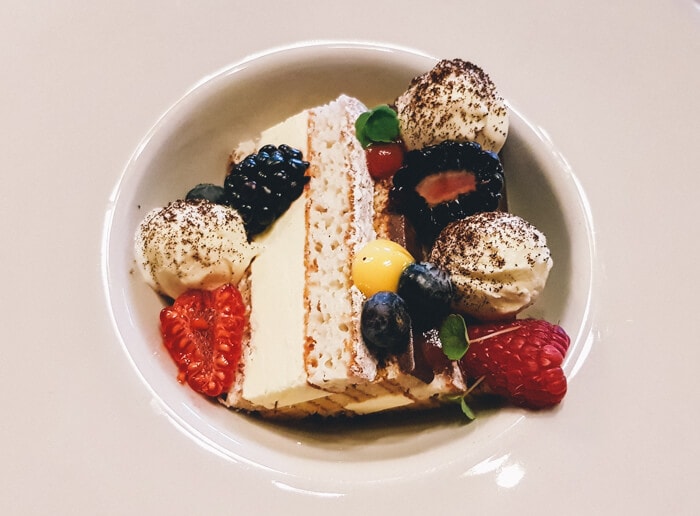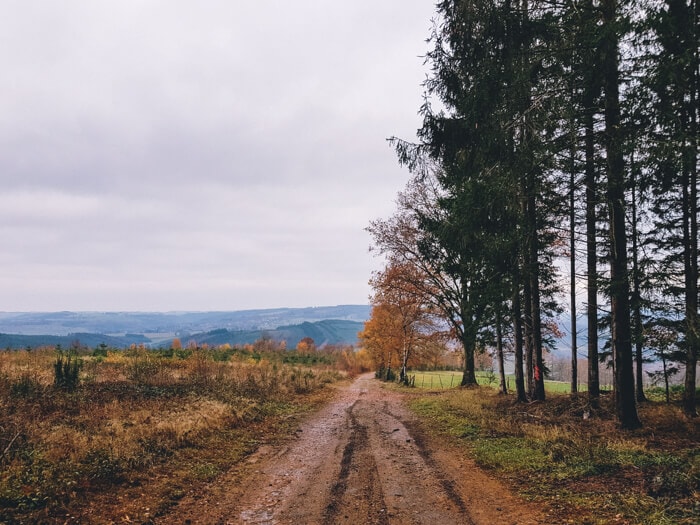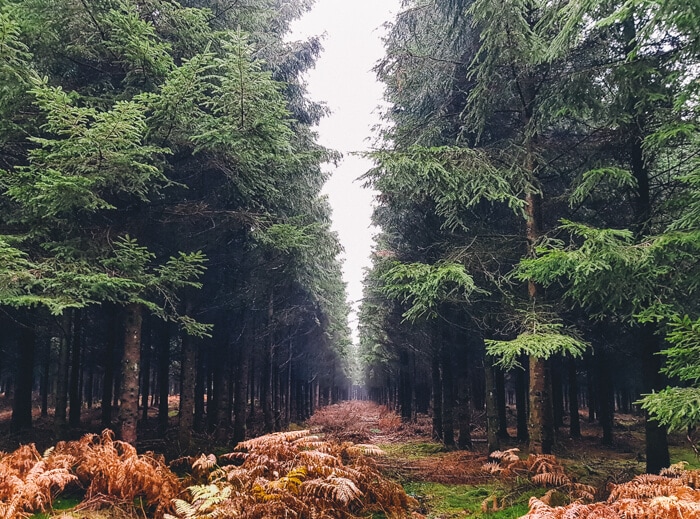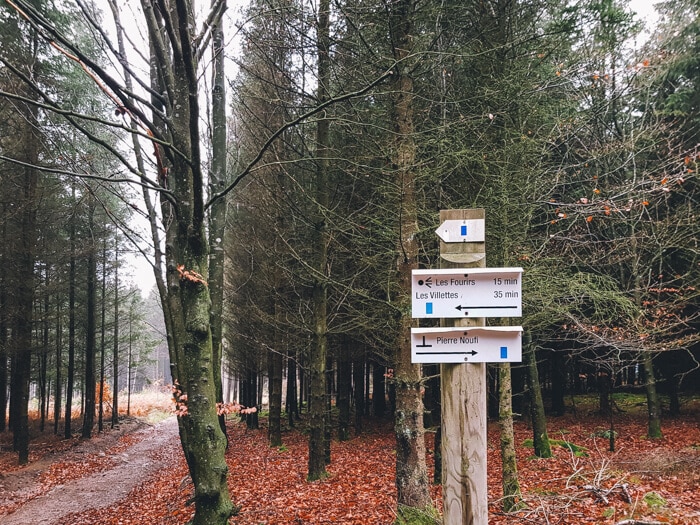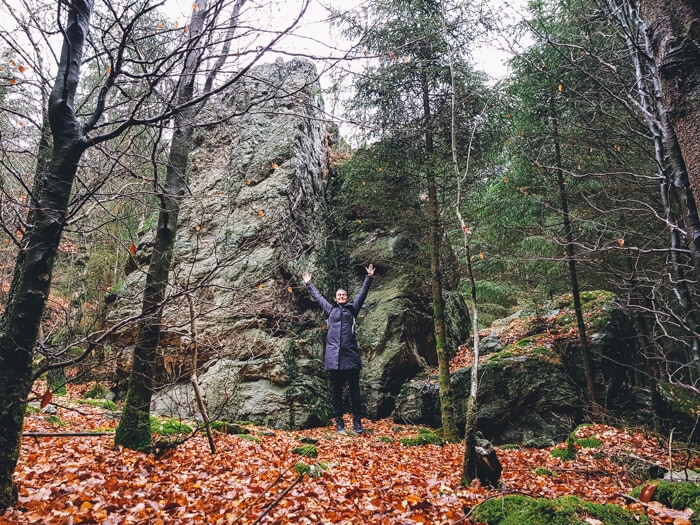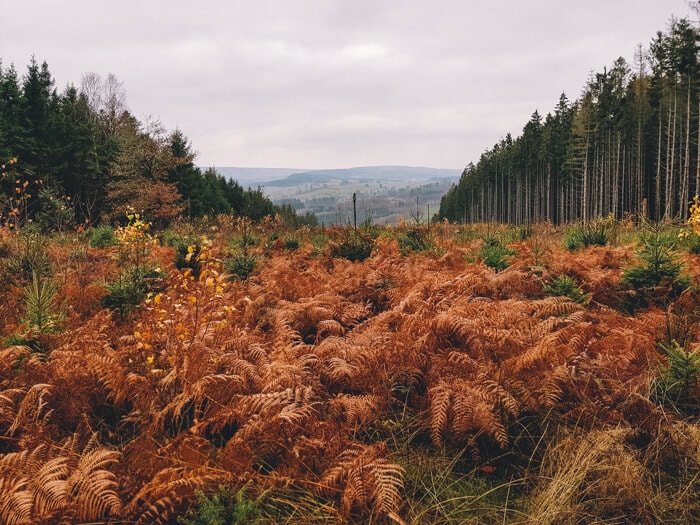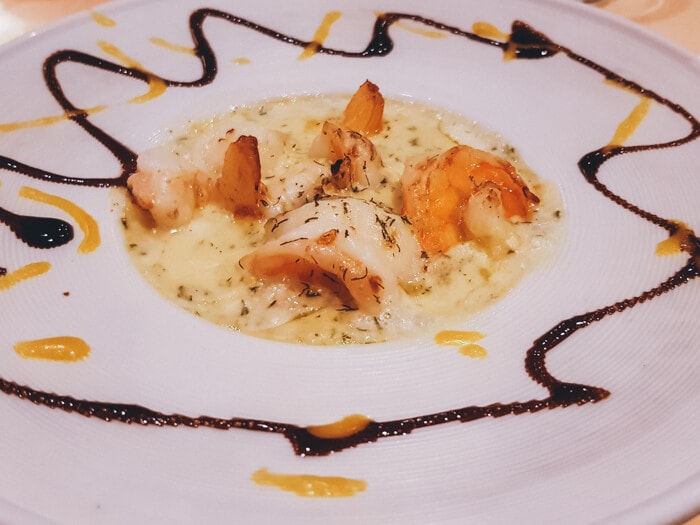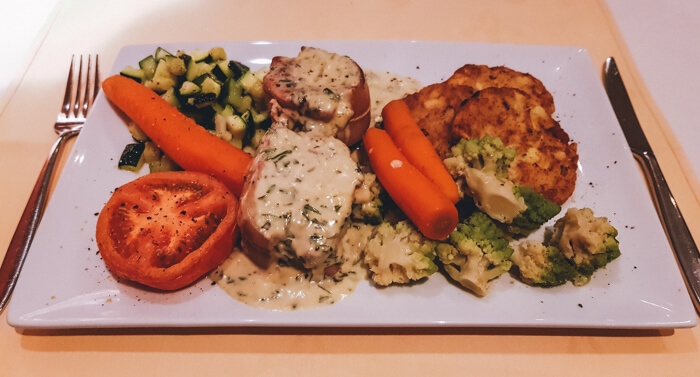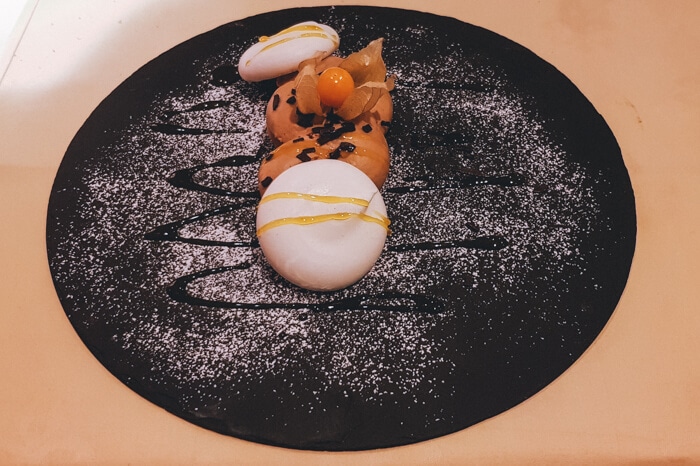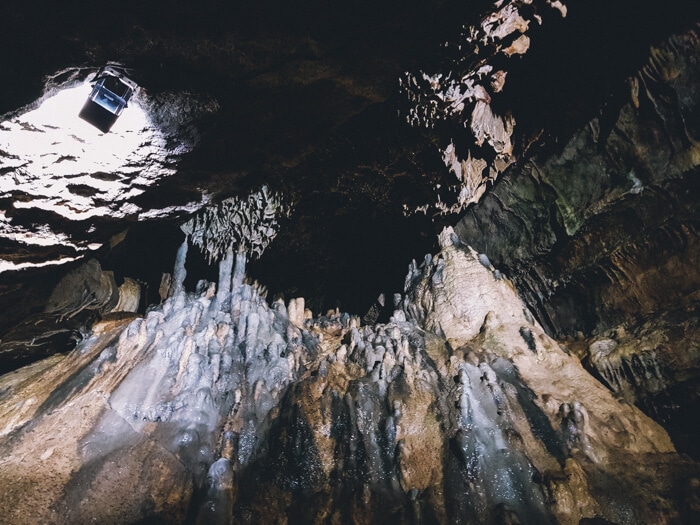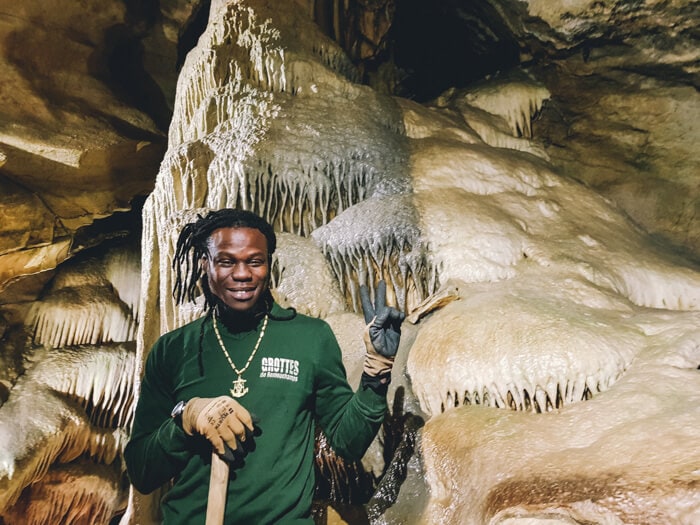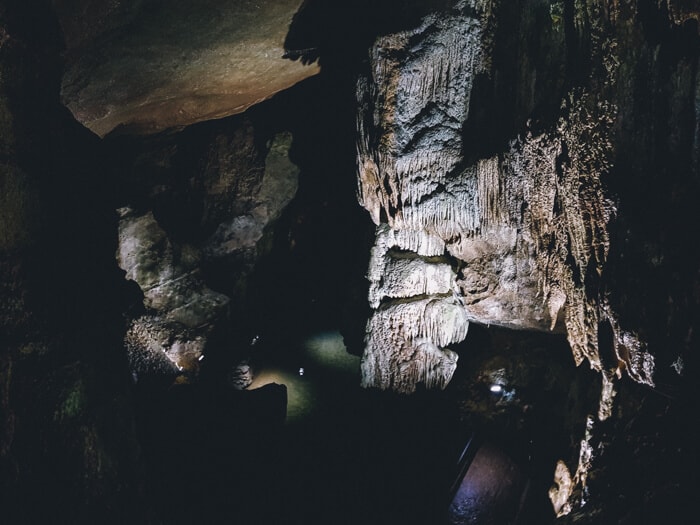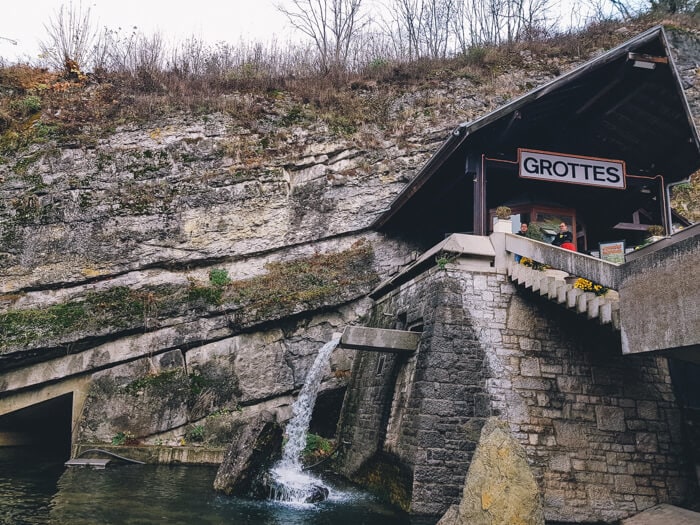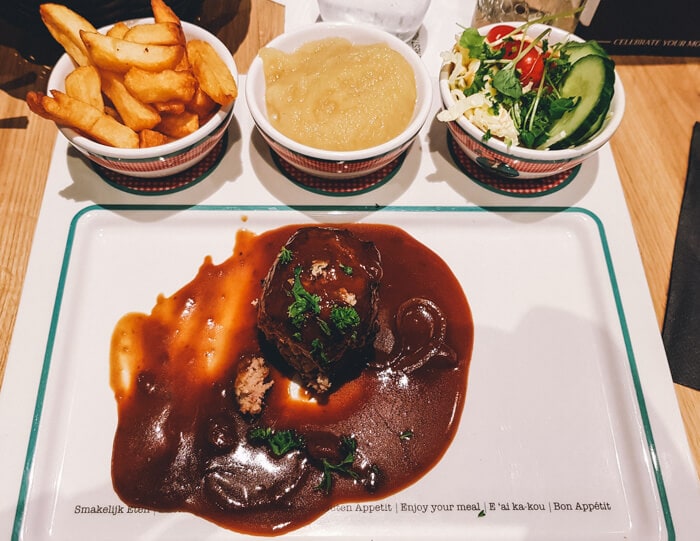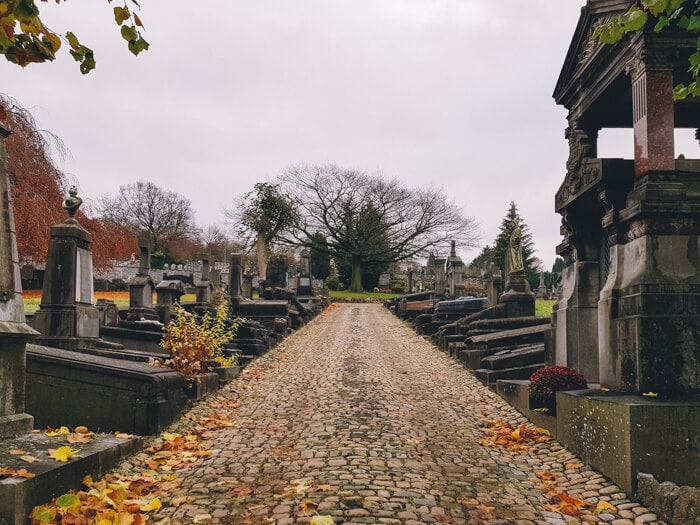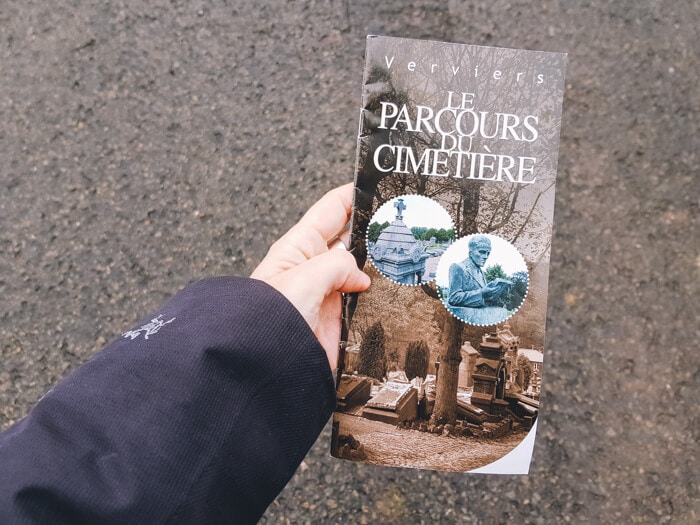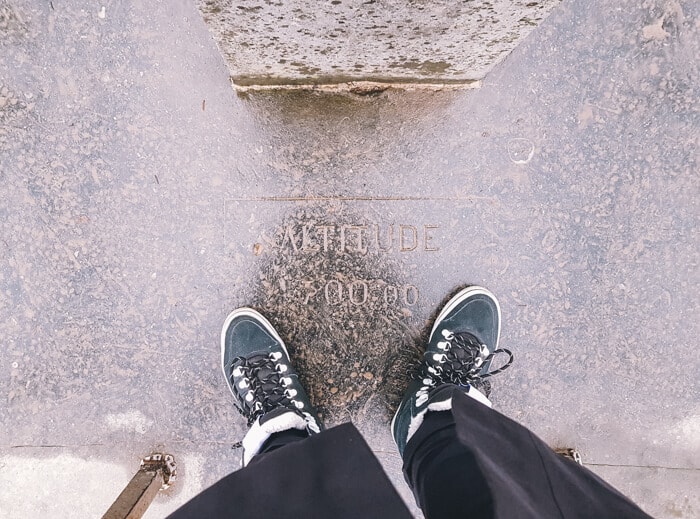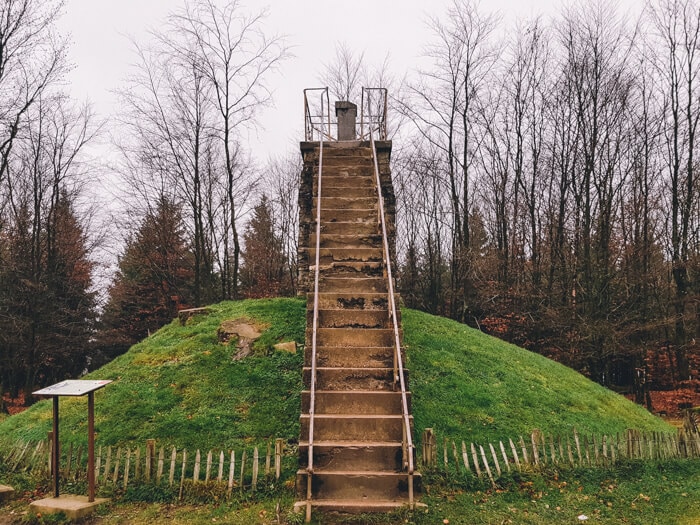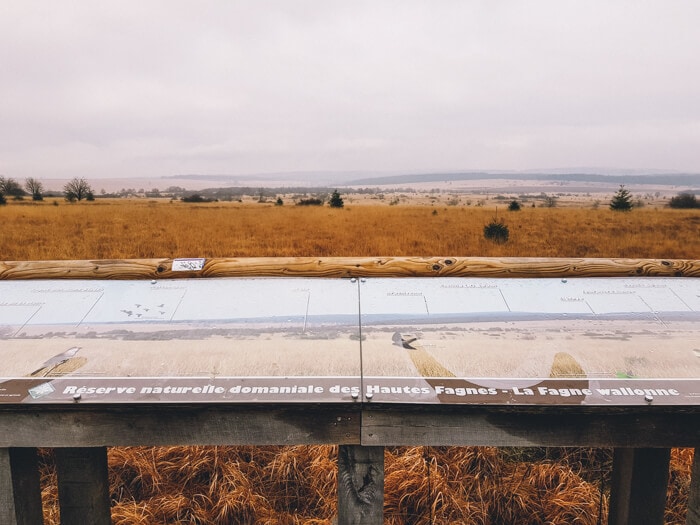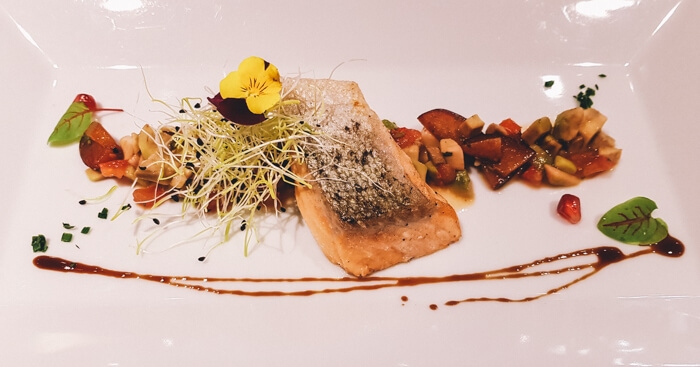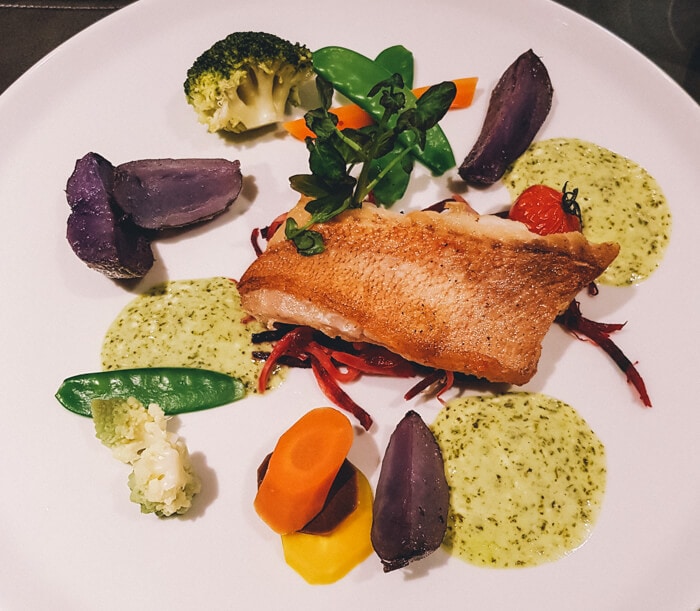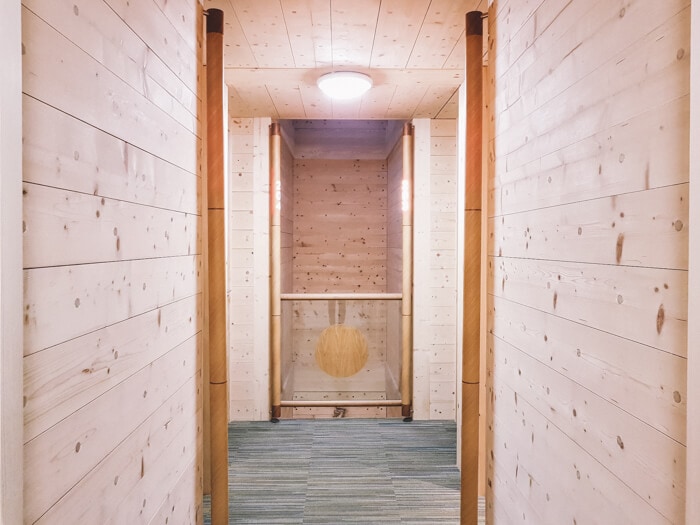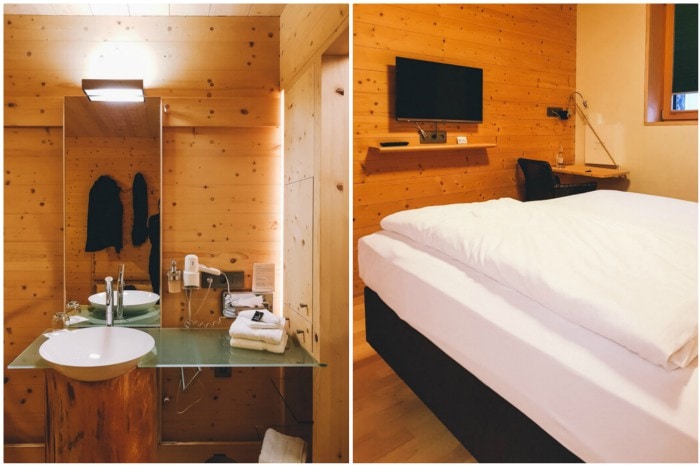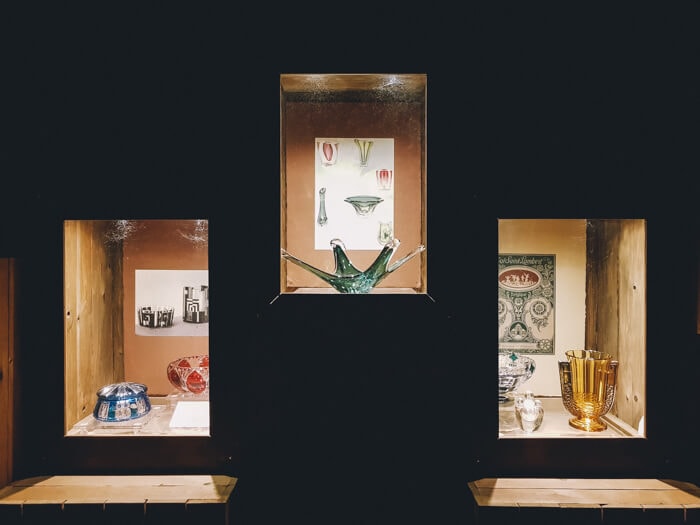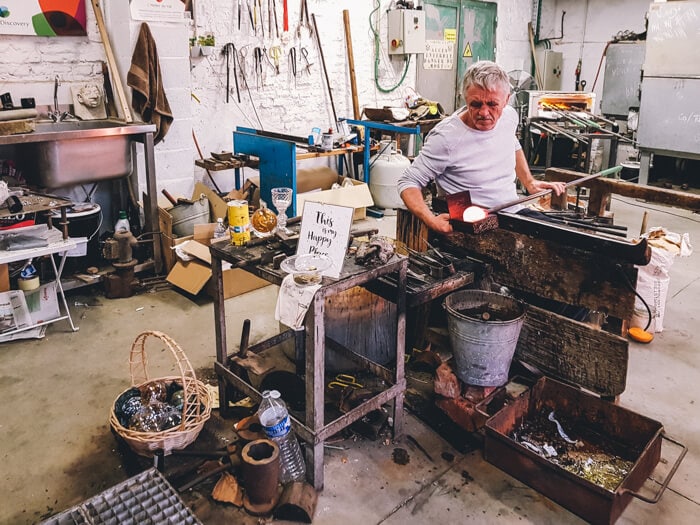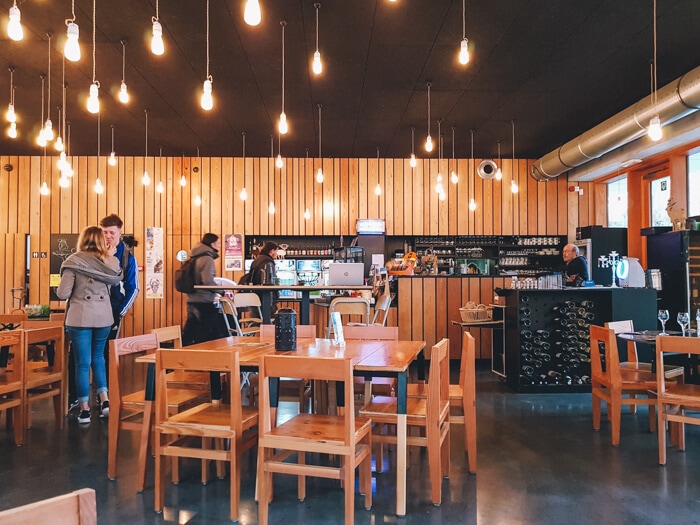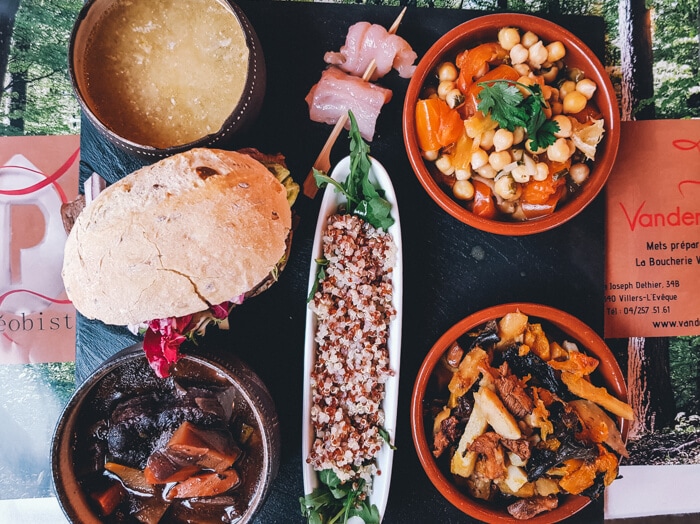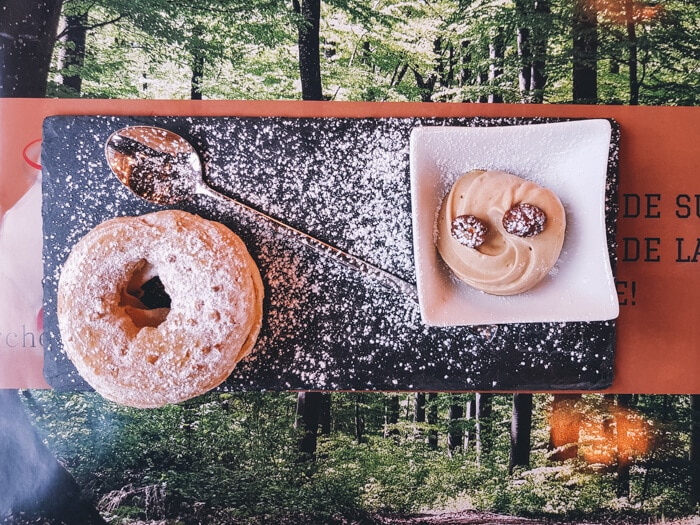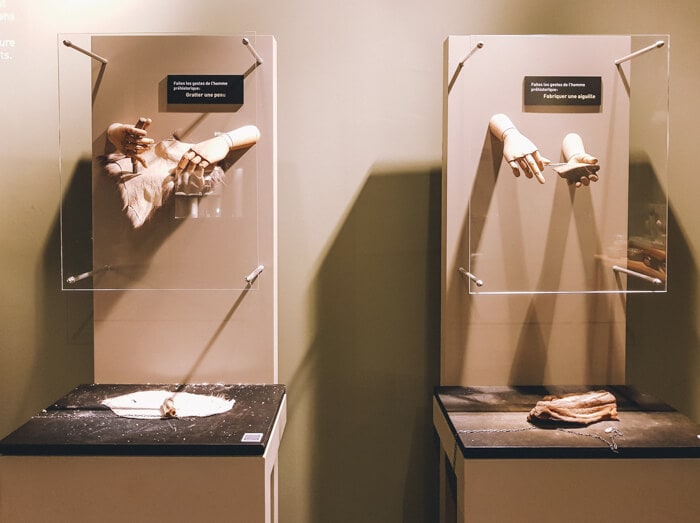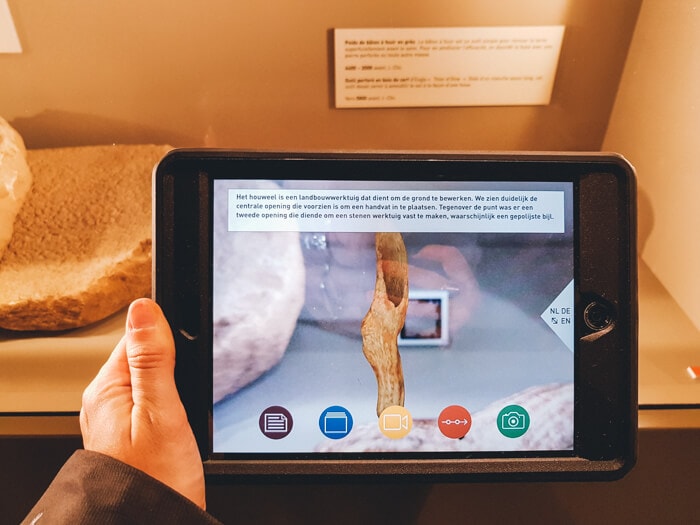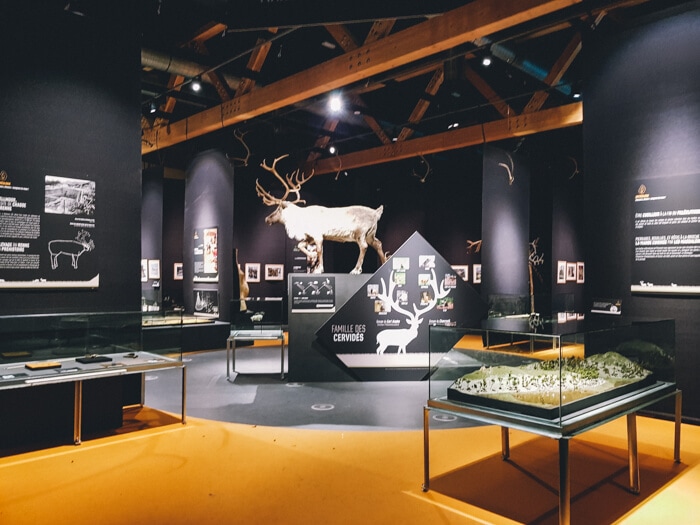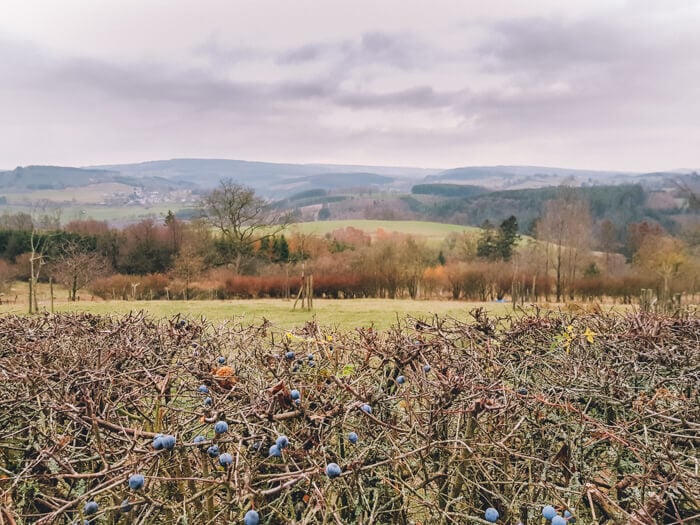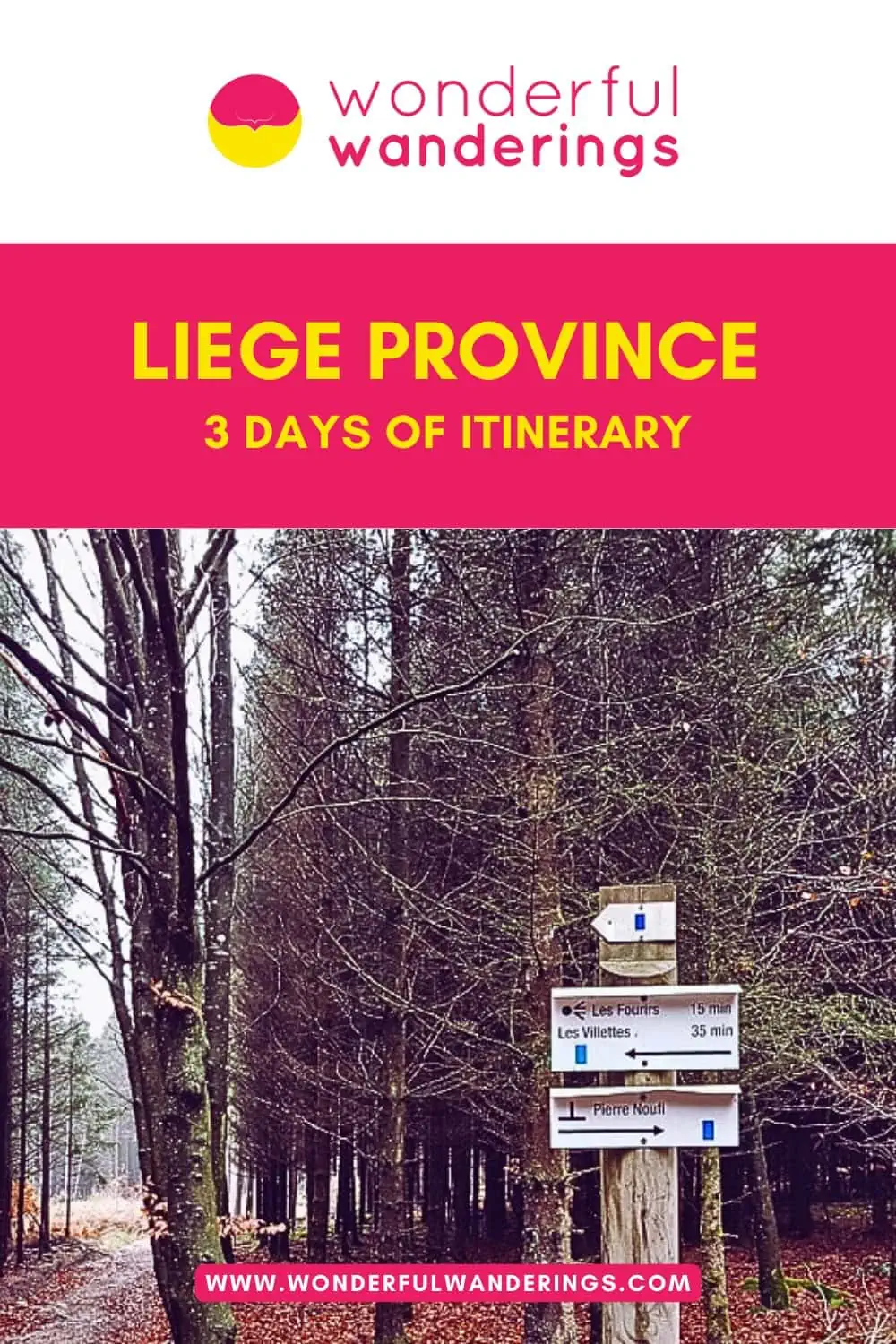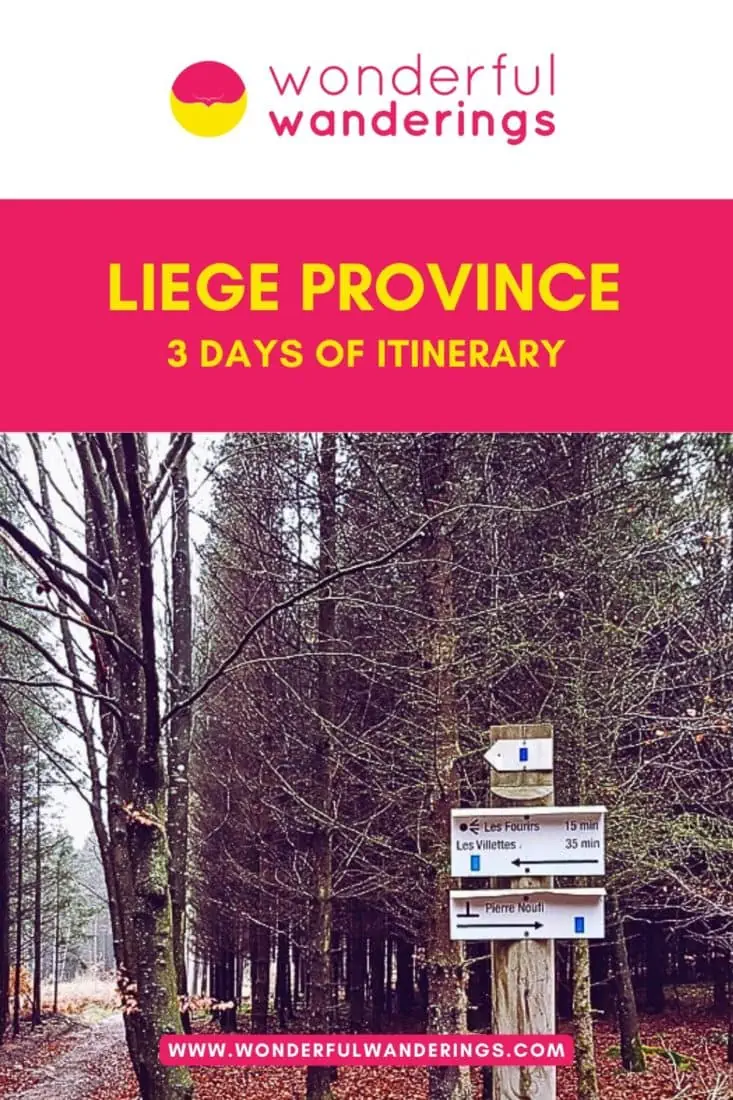I’m always up for exploring a bit more of my home country Belgium but being the workaholic that I am, I often need a kick in the behind to do so. This time, that kick came from the Province of Liège. They’ve put together a list of unusual things to do, places to stay at and places to eat at in the province and asked me if I wanted to come discover some of them.
I put together my own itinerary for three days of unique things to do in Liège and opted for a mix of outdoor, cultural, and culinary activities. Check them out below.
Contents
Day 1: Hike to the Leroux Tower vantage point
The Leroux Tower is a 16m 65 cm high vantage point in the town of Trois-Ponts, overlooking the Salm Valley and many points of interest in the area, such as the upper lakes of the Coo-Trois-Ponts hydroelectric power plant, the town of Coo, the small villages of Brume, Mont-de-Fosse, Bergeval, Saint-Jacques and, on a clear day, the Baraque de Fraiture in the neighboring province of Luxembourg.
To get there, you can do a 6-km round hike that starts right by the town’s train station, where you can park for free. This map gives you a good idea of the route but note that I did the walk in the other direction, so that’s how I’ll share it with you.
When you’re facing the train station, walk right toward the bridge going over the railway. It’s about 200 meters. To the right of where the bridge starts, the trail starts as well and takes you down toward the river Salme. There’s a pole with trail markers. Follow the horizontal red rectangle.
After a bit of walking, you’ll reach a point where the path goes straight but there’s also a metal bridge to your right. I didn’t find the signage clear here, but you’ll want to keep walking straight. What follows, is the only part of the hike where the trail is very narrow – just wide enough for one person – and there’s a bit of a drop next to you as you ascend and descend while walking along the river.
The trail remains the same for quite a while but you have some points of recognition. First, you’ll pass a rather large camping ground to your right. Then, you’ll walk underneath a railway bridge.
When you reach a big road, there are sign poles again and you’ll need to turn left to go up the hill. In hunting season (October – December) this is also where they put up a list of dates when people will be hunting. On those dates, it’s forbidden to do the hike so if you’re planning to go in fall, it’s probably best to call the tourism office (+32 (0) 80 68 40 45 ) ahead of time to check there’s no hunting planned that day.
The path widens now. It’s half-hard and rather easy to walk except that it ascends quite a bit. Now, when I was researching this hike beforehand, many people said it was a heavy hike because of the elevation but I thought it was okay. Yes, this part of the hike goes up the entire time until you reach the plateau at the top, but it’s not like hiking in the Austrian mountains.
If you’re moderately fit, you’ll be alright. Just go slow and stop for a breather if you need one.
At the top of this trail, you’ll reach a plateau where you’ll cross through a forest before turning left. It’s just a minute or two now before you get to the Leroux Tower.
The current tower was built in 2000 but the original one dates back to 1938 and was named after the woodworker who had supplied the wood for the tower. It became a symbol of hope when on July 21, 1944, during World War II, a group of Belgian resistance fighters planted a Belgian flag on top of the tower. At that time, the area was still occupied by the Germans.
Between this tower and the first, there was another that had to be broken down in the late 1990s because the wood had gotten bad.
Because of my fear of heights, it was a little scary to climb the tower but not as much as I’d thought beforehand. The only part I found to be a bit scary was climbing the steps to the first two levels as they’re “see-through”: you can look down between two steps.
At the top deck, there’s a little bench to sit and admire the view or you can also make use of the picnic table back down if you want to take a little break before heading back.
The walk back goes along an easy to follow forest trail. Just watch your steps as it’s still a forest trail and so the ground isn’t entirely flat.
The red rectangles keep showing you where to go but it’s good to know that at one point, my feeling told me to follow a path going left and down to the town while I did, in fact, need to keep following the signs. They took me left and down a bit further so maybe that path I wanted to take would have worked as well but it wasn’t part of the route.
The forest trail ends by a big road that you have to follow down (left) until you reach the train station again. This part takes about 8 minutes.
When it’s been dry for long, you might be fine wearing sneakers, but I do recommend hiking shoes for this hike as the trail was rather muddy at times and get be quite uneven as well. I have the Salomon QUEST 4D 3 GTX® W boots which are great.
If you don’t have a lot of time and still want to see the tower, you can park somewhere along the Route de Wanne and walk into the forest to reach it in a few minutes. I haven’t tried this, though.
Where to eat lunch in Liège Province?
After that hike, you’ve deserved a good lunch! Hostellerie Beau Site is a hotel with a restaurant and patio that overlook the valley. It’s possible to have lunch or dinner here when you’re not a guest at the hotel but you do need to reserve beforehand.
I enjoyed a refined three-course lunch here consisting of:
- a goat cheese, apple and pear salad as a starter
- a game dish as the main course
- a special kind of cake with ice cream for dessert
The guy who runs the place was lovely to chat with too. Hostellerie Beau Site is located in Rue des Villas 45, Trois-Ponts.
What is Noufy Rock hike?
The Pierre Noufy or Noufy Rock is one of the most isolated rocks in the country… and it comes with a legend. A golden ring is constantly growing inside the stone. But that’s not all, according to local tales. The Noufy Stone is said to bring fertility to women who touch it and in the past, witches held their covens here.
It shouldn’t come as a surprise that such a unique stone isn’t easy to get to. In fact, it doesn’t even lie on a hiking trail but tucked away in the woods. Luckily for us, brave explorers who’ve come before us have cleared a little path and you can now reach it by venturing off a trail that starts in the town of Les Villettes (Lierneux).
Now, the center of Les Villettes is small and there’s no real parking ground for those who come by car to do the hike. I parked on some grass by a picnic table in the street called La Sevraille and I’d say that’s probably your best bet too as you’ll need to hike up La Sevraille to where the forest and the hike start.
The road goes up steeply but after that, it’s pretty much a flat hike until you go down again.
The sign you need to follow for the 5.5 km hike I did, is the upright blue rectangle. If you have more time, there’s also a 14 km hike you can do that passes by the Pierre Noufy. For that one, you need to follow the horizontal yellow rectangle.
I have to honestly say that I hadn’t expected much from this hike. I thought I’d just go in search of a rock in forest that, it being the end of November, would be rather leaveless.
Boy, was I in for a surprise!
The woods in which you can find the Noufy Stone consists of lush green pine trees. The soil was covered in bright green moss and bracken turned a warm orange. I tried endlessly to capture it on camera but I still feel the photos don’t convey how otherworldly this place looked.
The walk was easy and straightforward. When La Sevraille reached the forest, you keep going straight over the wide forest road until you reach a big crossroads where the signs tell you to go left. Here you just keep following the road again. After a while, it becomes narrower as you go more into the forest.
I was worried I’d missed the sign that indicated where to go look for the Noufy Stone but I just hadn’t gone far enough. You really can’t miss it. It’s at a crossroads where the path you’re on keeps going straight but there’s also a trail going to the right.
You’ll have to leave your route for just a few meters to go right and then there will be another sign indicating where the Pierre Noufy is. It might not be super clear in summer but now I could spot it in between the trees.
Again, expecting just a big rock in the forest, I was surprised by the vibe at this spot. Maybe it was because I was all alone there and the woods were super quiet. Maybe it was because of the small rocks covered in moss and mushrooms surrounding the Pierre Noufy, but this place felt special. Maybe not golden-ring-in-a-rock special but definitely witch-covens special.
You can walk all around the rock but I didn’t. I only made it halfway. When an unexplainable feeling tells you to stop, you stop, right?
Don’t believe me? You’ll just have to go look for the Noufy Stone yourself. When you do, come back here and tell me if it also left an impression on you.
Happy that I’d found it, I returned to the main trail which now led me straight back down to Les Villettes, offering an amazing view along the way.
I also spotted what could potentially be my dream house. It was the first house, I believe, I saw after leaving the forest and it was built on a slope overlooking the valley. On the side of the trail, it was just bricks but I could tell that on the garden side overlook the valley, it was all windows.
On top of that, it had an apple tree (I’ve always said I want an apple tree in my garden later) and blueberry bushes!
Where to have dinner at Liege Province?
La Maison de Maître is a luxury boutique hotel with an on-site restaurant and that’s where I went for dinner. The website says there’s the option of eating à la carte with a selection of each time four options for the starter, main course, and dessert, but when I was there, it was a fixed menu. Perhaps because of it being low season.
I ended up having shrimp in a creamy dill sauce, porc with lots of vegetables and some kind of fried potato mash and three heavenly scoops of caramal mousse
I really like the starter and the dessert but I’m not a big fan of porc or greasy things so I was a little less fond of the main. That’s just personal taste, though, as there was nothing wrong with the way it was prepared.
The lady serving me was super friendly and made sure I had everything I needed.
There’s a large parking lot behind the hotel and it’s necessary to reserve beforehand if you’re not a guest and want to have dinner here. La Maison de Maître is located in Les Marottes 37-39, Arbrefontaine (Lierneux).
Where to overnight in Liege Provice?
So why didn’t I spent the night at La Maison de Maître as well? I’m sure it would have been wonderful, but while researching this trip I’d come across something even more unique: Le Bois Brûlé, a beautiful cabin on a dead-end road with three double rooms and a communal space which can be booked per room or in its entirety.
WiFi is present but instead of a television, you get surrounding windows offering you a view of the woods and the stars. The owner Annelore told me there are deer there too. Unfortunately, I didn’t spot any.
Also a plus for me: the ergonomic pillow on the bed.
Aside from this cabin, there’s also a second cabin which acts as a big living room and second kitchen. It’s ideal for a group of friends or a family that wants a bit more space to hang out and cook together.
Breakfast is served in Annelore’s living room and consists of homemade spelt bread, white bread made by a lady living nearby, homemade jams, honey, cheese and yogurt from a local organic farmer, and a crunchy granola with fresh fruit. The coffee served is made from freshly ground coffee beans and there’s tea as well.
There are various hiking routes that start near Le Bois Brûlé and Annelore gladly provides you with all the information you need as well as with laminated route maps that you can use. Le Bois Brûlé is located in Derrière les Thiers 3a, Trou de Bra (Lierneux).
Day 2: Visiting the Caves of Remouchamps
The Caves of Remouchamps are one of the larger attractions in the area. They were discovered in 1828 and have been open to the public since 1912. You can only visit them on a guided tour and tours run throughout the day. How often depends on how busy it is.
As I visited during the last week of the season (the caves are closed in December and January), it was calm and I had guide Milton all to myself. He was an interesting character on his own, a rastaman originally from Suriname wearing a big golden chain to complete his uniform and happy to pose for a photo.
The first part of the tour consists of a 1,200-meter walk through the halls and galleries of the cave. You’ll stand in a room that was carved out by the Rubicon river 1 million years ago. Given how high it is, you’ll probably wonder how that little river, that now just runs a meter deep inside the caves, was ever able to have such an effect.
Actually, there’s only one room in the cave that wasn’t formed by the river and that’s the room called The Cathedral. It was created when part of the cave collapsed some 700 years ago.
You’ll also be told about the bats that live in the cave and will see 7-meter chalkstone that’s 700,000 years old. Apparently, a stone like this only grows 2 to 3 cm³ per century. Crazy, right?
It’s able to grow because of rainwater that seeps in through the cracks at the top of the cave. If the chalk still looks wet and whitish, it’s a stone that’s still growing. If it’s dry and brown, it’s “dead”. A chalk stone dies when the cracks that provide it with rainwater close. That means it can also come back to life. All it needs is a new crack where water can seep through.
Speaking of water: you don’t make your way back to the entrance walking. Nope, you’ go by boat! The Caves of Remouchamps have the longest cave boat ride in Europe. It’s about 700 meters long and requires quite a bit of strength from the guides as they use a wooden pole to push the boats forward – and these can contain up to 22 people!
At the end of the ride, you pass through a narrow tunnel and this is the only part of the route that was man-made. Every other hall and gallery you go through was carved out by nature but the tunnel was a 40-cm crack they opened up with explosives to allow boats to get through.
It used to be known as “the kissing tunnel” because until a few years ago, the tunnel was entirely dark and so the guides would hear couples kissing but they wouldn’t see them.
What should visitors know before visiting the Caves of Remouchamps?
Listed below are the tips for visiting the Caves of Remouchamps.
- Rain is heavy. When it rains very heavily, it’s impossible to do the boat rides as that level of the caves becomes flooded and a 30-meter high waterfall splashes down on it.
- The passageways are rather narrow. Some of the passageways are rather narrow and you’ll have to take a total of 400 steps during your visit, but there is a shorter route for people with limited mobility.
- No dogs or pets allowed. It’s not allowed to bring dogs on the tour.
- Constant temperature. The caves have a constant temperature of about 12 degrees Celcius, so dress accordingly.
To make a full day out of it, you can combine the caves with a visit to the Monde Sauvage Safari Parc, located nearby.
Where to lunch in Caves of Remouchamps?
Part of the Van der Valk chain, the Van der Valk Verviers is unique because of its location in a former train station. It has a spacious bistro and restaurant and with a large parking in front, it’s an easy place to stop for lunch.
I had a traditional Liège meatball which came with fries, a small salad, and some apple mousse. Yum! If you don’t know about Liège meatballs, check out my post on typical Belgian foods.

What is Parcours Le Cimetière de Verviers?
I had lunch in Verviers because of my next activity: a walk at the city’s cemetery. Now, I can hear you thinking: why on earth would I want to visit a cemetery?! Well, people visit Père Lachaise in Paris as well, don’t they?
The cemetery of Verviers isn’t just any cemetery. It spans 9 hectares and contains a history of the city via its past citizens. Le Parcours du Cimetière or “The route of the cemetery” takes you past 40 unusual graves over the course of about 3 kilometers.
The accompanying brochure tells the stories of the deceased and with it their heritage and the history of Verviers. You’ll see a Mausoleum with no less than 56 rooms, the crypt of a large industrial family and the tombs of well-known artists.
From Verviers, it’s only a 20-minute drive to Signal de Botrange, the highest point in Belgium at a staggering height of – brace yourself – 700 meters. I know, I know, it’s not that spectacular, but still, it’s one of these things you just have to when you have the chance.
The Signal de Botrange lies in the High Fens nature reserve, which is great for hiking all-year-round. In summer, you just need to be aware that some areas might be closed off due to the risk of forest fires.
What are the tips for visiting Signal de Botrange?
I always use Google Maps as my GPS but when I used it to drive to the Signal de Botrange, it sent me the wrong way when you come from Verviers and have just passed Baraque Michel. The road will split at one point and Google Maps will tell you to continue straight on the Route de la Baraque Michel but if you pay attention, you’ll see the signs for the Signal de Botrange pointing left, onto the N676.
Go left and you’ll almost immediately see the restaurant and information center of the Signal de Botrange to your right. There’s a big free parking from which you can already see the steps leading up to the highest point.
If you have time to go for a walk, you can just cross the street at the information point and the path in front of it will lead you to this viewing point that’s also located on different trails.
Where to sleep and dine in Liege Province on day 2?
Having done enough kilometers for the day, I drove to Hotel SleepWood where I’d spend the night as well as dine at the one-site Fine-Food restaurant.
FineFood serves a four-course meal consisting of a tapas buffet, a light starter, a main course, and a dessert buffet with sweets and cheese. For the starter, there were two options and for the main course, three.
The restaurant is true to its name because I found the food to be refined and well-portioned. I had three little tapas to start, followed by smoked salmon with an avocado salad and then a white fish with vegetables and purple potato. For dessert, I skipped the cheese and had three little sweets.
As there’s no coffee or tea in the rooms, I asked to take a tea upstairs and got a cute little pot with a plate of chocolate treats on the side.
SleepWood is a 3-star, eco-hotel in the center of Eupen. Its interior consists almost entirely out of natural materials such as wood and clay and the idea that less is more is clearly present in the design of the rooms. Instead of having different tables and closets, there’s storage space tucked away in the walls and a wooden bench.
Wooden planks can be held up by ropes to form a table and the big mirror by the sink is placed on rails so you can slide it out and use it as a full standing mirror. It’s brilliant in its simplicity.
Also: no light and other switches in a million places. Instead, there’s a small screen next to the bed which I first thought was just a digital clock but no, it allows you to control the lights as well as the temperature of the room, which is set to a max of 23 degrees Celcius.
Heating doesn’t happen traditionally either but through the walls! It’s subtle and works well with the softly present smell of wood. Bliss. When you open the window, the heating turns off automatically.
Each room also has individual air circulation. Air is sucked out via the bathroom, meaning it’s never humid in the room, and fresh outside air is blown in again via a device by the wall. It has three stands and you can also turn it off completely if you’re a bit chilly.
As I said, there are no coffee or tea facilities in the room but you can always get something from the restaurant downstairs. There’s also no minibar but there is a flatscreen tv.
I always just drink tap water but if you like, you can get a free (refillable glass) bottle of still or sparkling water to take up to your room with you.
Even radiation is thought of. The rooms are designed in such a way that there’s barely any radiation. I found that my data still worked, though, and each room also has a WiFi router and range extender that’s plugged in so that if radiation is something you worry about, you can always unplug it when you don’t need it.
And then I haven’t mentioned the bed yet. The bed was heaven. It was just super comfortable. If I had been on a vacation, I still would’ve put the alarm at 7h15 just so that I could enjoy the bed all-morning-long.
Parking Loten is a free parking lot less than five minutes walking from the hotel.
Day 3: Visiting the Crystal Discovery of Val Saint-Lambert
The Crystal Discovery is a museum dedicated to the history of the Val Saint-Lambert Crystal in Seraing, Val Saint-Lambert.
The museum is located in an old Cistercian abbey and showcases the history and artistic evolution of the crystal factory through no less than 250 pieces. A movie shares testimonials from former Val Saint-Lambert workers and it’s even possible to attend a live glass-making demonstration at independent glass studio Atelier Christophe Genard.
Also fun are the five interactive glass sculptures by the Belgian artist Bernard Tirtiaux and the Scenery Show that takes you through the art of glass-making from its beginning until now.
My favorite parts of the Scenery Show (which is actually a parcour you follow) were the beginning, where you get the impression of being in a hot air balloon flying over the site of the crystal factory as it changed throughout the ages, and the room which shows you various roles glass plays in our everyday lives.
There’s also a shop and cafe and visitors can wander around the gardens to see the historical buildings from the outside.
Where to have lunch near Val Saint-Lambert?
From Val Saint-Lambert it’s less than a 10-minute drive to the Préhistomuseum in Flemalle. My main reason for visiting this museum was its bistro.
Aside from regular bistro dishes, the Archéobistrot serves a tasting menu that takes you through the ages of men.
Archéobistrot tasting menu includes.
- from Prehistory: a half-raw fish skewer drawn with salt
- from Antiquity: pan-fried old vegetables, mushrooms and feta
- from the Middle Ages: salmon soup
- from Modern Age: a hare sandwich
- from current times: simmering oxtail
This comes accompanied by a quinoa salad and if you want (I wanted), you can add on a dessert based on a recipe from 1891 which is a pastry with nut cream.
It’s possible to visit the bistro without going to the museum but I have to say you’d be missing out.
What is Préhistomuseum?
I had really gone to Flemalle for the Archéobistrot but since I was already there, I took the chance to see the museum as well. I honestly hadn’t expected much of it. I’m not a history museum person to start with and I thought I’d be seeing cheesy reenactment scenes made with weird-looking puppets.
If you’ve ever been to a history museum, you know what I’m talking about. This wasn’t anything like it.
The Préhistomuseum is not just a museum. It’s a domain on which you find the exhibition building, an archery course, a maze, reconstructions, a barefoot path, a cave, and a farm with what were the first domesticated animals and plants.
The permanent exhibition is not just a collection of objects. Every room has a bunch of little squares you can scan with a tablet to get more information. There are things you can try out for yourself, like scraping the fur off of animal skin or carving an arrow out of stone, and there’s a wall which puts the everyday objects we know now, such as jeans and sneakers, next to similar objects of bygone times.
There’s also a hall which teaches you about the different kinds of archeologists there are and that shows you how objects are stored and preserved. It’s even possible to book a meeting with an archeologist.
And then there’s a room for a temporary exhibition. When I visited – and still until March 17, 2019, it was all about reindeer and their relationship with men, both during Prehistory in Europe and now still with tribes in Siberia. The photos here are worth seeing.
What are the tips to visit Préhistomuseum?
Listed below are the tips to visit Préhistomuseum.
- Upon arrival, go to the exhibition building first. It’s here that you learn which activities you can do at what times.
- You’ll need to make a reservation for some.
- There’s free parking at the museum.
How to get around Liège Province?
While it is possible to travel around by bus, I highly recommend to rent a car to explore the Province of Liège, especially if you want to go hiking. Traffic in this part of the country is pretty relaxed and in the countryside, it’s never to hard to find a (free) parking spot.
And that was it! I hope the above has gotten you in the mood to come and visit this beautiful province. When you do, make sure to let me know how you liked it!
PIN FOR LATER

